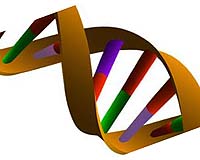| . |  |
. |
Melbourne FL (SPX) May 20, 2009 Ciguatera poisoning, the food-borne disease that can come from eating large, carnivorous reef fish, causes vomiting, headaches, and a burning sensation upon contact with cold surfaces. An early morning walk on cool beach sand can become a painful stroll on fiery coals to a ciguatera victim. But is this common toxin poisoning also the key to a larger mystery? That is, the storied migrations of the Polynesian natives who colonized New Zealand, Easter Island and, possibly, Hawaii in the 11th to 15th centuries? Could ciguatera be the reason masses of people left paradise? Teina Rongo, a Cook Island Maori from Rarotonga and a Ph.D. student at the Florida Institute of Technology, and his faculty advisers Professors Robert van Woesik and Mark Bush, propose this intriguing theory in an upcoming issue of the Journal of Biogeography. Based on archeological evidence, paleoclimatic data and modern reports of ciguatera poisoning, they theorize that ciguatera outbreaks were linked to climate and that the consequent outbreaks prompted historical migrations of Polynesians. Why would historic populations of Cook Islanders take the chance of voyaging? A journey beyond the horizon was risky and favorable landfalls were uncertain. It is known that this population was heavily reliant on fish as a source of protein, and the scientists suggest that once their fish resources became inedible, voyaging became a necessity. Modern Cook Islanders, though surrounded by an ocean teeming with fish, don't eat fish as a regular part of their diet but instead eat processed, imported foods. In the late 1990s, lower-income families who could not afford processed foods emigrated to New Zealand and Australia. The researchers suggest that past migrations had similar roots. The heightened voyaging from A.D. 1000 to 1450 in eastern Polynesia was likely prompted by ciguatera fish poisoning. There were few options but to leave once the staple diet of an island nation became poisonous. "Our approach brings us a step closer to solving the mysteries of ciguatera and the storied Polynesian native migrations. We hope it will lead to better forecasting and planning for ciguatera outbreaks" says van Woesik. Share This Article With Planet Earth
Related Links Florida Institute of Technology All About Human Beings and How We Got To Be Here
 Gaining insights Into The Patterns Of Human Population Structures
Gaining insights Into The Patterns Of Human Population StructuresSeattle WA (SPX) May 19, 2009 Through sophisticated statistical analyses and advanced computer simulations, researchers are learning more about the genomic patterns of human population structure around the world. Revealing such patterns provides insights into the history of human evolution, the predominant evolutionary forces that shaped local populations, and the relationships among populations. "Studying genomi ... read more |
|
| The content herein, unless otherwise known to be public domain, are Copyright 1995-2009 - SpaceDaily. AFP and UPI Wire Stories are copyright Agence France-Presse and United Press International. ESA Portal Reports are copyright European Space Agency. All NASA sourced material is public domain. Additional copyrights may apply in whole or part to other bona fide parties. Advertising does not imply endorsement,agreement or approval of any opinions, statements or information provided by SpaceDaily on any Web page published or hosted by SpaceDaily. Privacy Statement |